2022 CCA Ground Display Aircraft Update
2022 California CAPITAL AIRSHOW
GROUND DISPLAY AIRCRAFT – SNEAK PEEK!
>>> Here’s a taste of the Fighter & Vintage aircraft scheduled to appear at this weekend’s airshow. <<<
Last update: 9/27/2022 at 08:37 PT
In addition to some of the best civilian and military pilots in the world – flying for you …
You get to see and walk through one of the LARGEST ground displays of civilian & military aircraft in North America.
The 2022 airshow is also a unique opportunity to meet the men and women who fly and maintain these magical machines.
Please note: Aircraft below might not be the exact paint scheme, unit, or tail flash shown. All display aircraft are subject to change without notice. Please check back before the show for the most up-to-date list of 2022 display aircraft.
Navy F-35C Lightning II
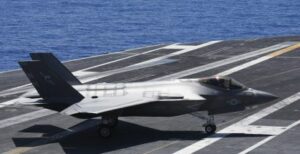
The 5th generation F-35 Lightning II integrates advanced stealth technology into a highly agile, supersonic aircraft that provides the pilot with unprecedented situational awareness and unmatched lethality and survivability. As new threats emerge, it is more important than ever for U.S. and allied fighter fleets to fly the F-35 stealth fighter, the world’s only 5th generation international aircraft. While each aircraft is uniquely designed to operate from different environments, all three variants set new standards in network-enabled mission systems, sensor fusion and supportability. The F-35 redefines the multirole fighter.
The F-35 is designed with the entire battlespace in mind, bringing transformational capability to the United States and its allies. Missions traditionally performed by specialized aircraft (air-to-air combat, air-to-ground strikes, electronic attack, intelligence, surveillance and reconnaissance) can now be executed by a squadron of F-35s.
For the first time in U.S. naval aviation history, radar-evading stealth capability comes to the carrier deck. The F-35C carrier variant sets new standards in weapon system integration, lethality, maintainability, combat radius and payload that bring true multimission power projection capability from the sea.
The F-35C combines lessons learned from previous aircraft with technology breakthroughs to produce a fighter that retains its stealthy advantage with minimal low observable maintenance, even in the harshest shipboard conditions.
The F-35C matches 5th generation survivability with major advances in network-enabled mission systems, reliability and interoperability. It is a first-day-of-the-war fighter with the capability to dominate adversaries in the air or on the surface, while surviving the most formidable threat environments.
Photo / Info Credit:
https://www.navy.mil/Resources/Fact-Files/
Display-FactFiles/Article/2166244/f-35c-lightning-ii/
U-2 Dragon Lady
 “The Lockheed U-2, nicknamed “”Dragon Lady””, is an American single-jet engine, ultra-high altitude reconnaissance aircraft operated by the United States Air Force (USAF) and previously flown by the Central Intelligence Agency (CIA). It provides day and night, high-altitude (70,000 feet; 21,336 m), all-weather intelligence gathering. The U-2 has also been used for electronic sensor research, satellite calibration, and communications purposes.
“The Lockheed U-2, nicknamed “”Dragon Lady””, is an American single-jet engine, ultra-high altitude reconnaissance aircraft operated by the United States Air Force (USAF) and previously flown by the Central Intelligence Agency (CIA). It provides day and night, high-altitude (70,000 feet; 21,336 m), all-weather intelligence gathering. The U-2 has also been used for electronic sensor research, satellite calibration, and communications purposes.
Early versions of the U-2 were involved in several events through the Cold War, being flown over the Soviet Union, China, Vietnam, and Cuba.
In 1960, Gary Powers was shot down in a CIA U-2A over the Soviet Union by a surface-to-air missile (SAM). Another U-2, piloted by Major Rudolf Anderson, Jr., was lost in a similar fashion during the Cuban Missile Crisis of 1962.
The U-2 is one of a handful of aircraft types to have served the USAF for over 50 years. The newest models (TR-1, U-2R, U-2S) entered service in the 1980s. The current model, the U-2S, received its most recent technical upgrade in 2012. They have taken part in post–Cold War conflicts in Afghanistan and Iraq, and supported several multinational NATO operations.”
Photo / Info Credit:
Info Source: https://en.wikipedia.org/wiki/
Lockheed_U-2
HH-60G Pave Hawk
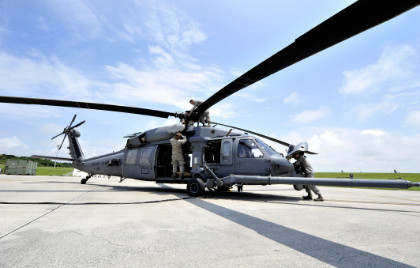
“The Sikorsky MH-60G/HH-60G Pave Hawk is a twin-turboshaft engine helicopter in service with the United States Air Force. It is a derivative of the UH-60 Black Hawk and incorporates the US Air Force PAVE electronic systems program. The HH-60/MH-60 is a member of the Sikorsky S-70 family.
The MH-60G Pave Hawk’s primary mission is insertion and recovery of special operations personnel, while the HH-60G Pave Hawk’s core mission is recovery of personnel under hostile conditions, including search and rescue. Both versions conduct day or night operations into hostile environments. Because of its versatility, the HH-60G may also perform peacetime operations such as civil search and rescue, emergency aeromedical evacuation (MEDEVAC), disaster relief, international aid and counter-drug activities.
All HH-60Gs have an automatic flight control system, night vision goggles lighting and forward looking infrared system that greatly enhances night low-level operations. Additionally, some Pave Hawks have color weather radar and an engine/rotor blade anti-ice system that gives the HH-60G an all-weather capability. Pave Hawk mission equipment includes a retractable in-flight refueling probe, internal auxiliary fuel tanks, two crew-served (or pilot-controlled) 7.62 mm miniguns or .50-caliber machine guns and an 8,000 pound (3,600 kg) capacity cargo hook. To improve air transportability and shipboard operations, all HH-60Gs have folding rotor blades.”
Photo / Info Credit:
https://en.wikipedia.org/wiki/
Sikorsky_HH-60_Pave_Hawk
P-38 Lightning
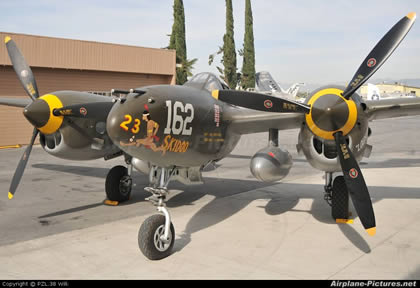 “The versatile Lightning performed many different missions during World War II, including dive bombing, level bombing, bombing through clouds, strafing, photo reconnaissance and long range escort. It first went into large-scale service during the North African campaign in November 1942, where the German pilots named it Der Gabelschwanz Teufel (“The Forked-Tail Devil”). When the Lightning began combat operations from England in September 1943, it was the only fighter with the range to escort bombers into Germany.
“The versatile Lightning performed many different missions during World War II, including dive bombing, level bombing, bombing through clouds, strafing, photo reconnaissance and long range escort. It first went into large-scale service during the North African campaign in November 1942, where the German pilots named it Der Gabelschwanz Teufel (“The Forked-Tail Devil”). When the Lightning began combat operations from England in September 1943, it was the only fighter with the range to escort bombers into Germany.
The Lightning truly shined in the Pacific theater; seven of the top eight scoring USAAF aces in the Pacific flew the P-38. On April 18, 1943, the long range of the P-38 enabled USAAF pilots to ambush and shoot down an aircraft carrying Admiral Isoroku Yamamoto, who was the planner of the Pearl Harbor raid and the commander of the Imperial Japanese Navy. The P-38 became the standard USAAF fighter in the Pacific theater until the closing months of WWII.”
Source:
https://www.nationalmuseum.af.mil/Visit/
Museum-Exhibits/Fact-Sheets/Display/Article/
196280/lockheed-p-38l-lightning/
F-15C Eagle
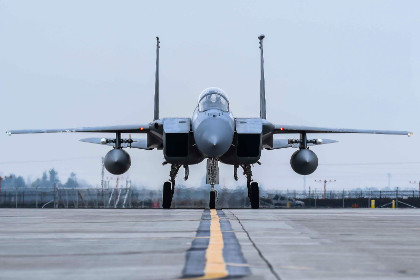 “The McDonnell Douglas F-15 Eagle is an American twin-engine, all-weather tactical fighter aircraft designed by McDonnell Douglas (now Boeing) to gain and maintain air supremacy in aerial combat. Following reviews of proposals, the United States Air Force selected McDonnell Douglas’ design in 1967 to meet the service’s need for a dedicated air superiority fighter. The Eagle first flew in July 1972, and entered service in 1976. It is among the most successful modern fighters, with over 100 victories and no losses in aerial combat, with the majority of the kills scored by the Israeli Air Force.
“The McDonnell Douglas F-15 Eagle is an American twin-engine, all-weather tactical fighter aircraft designed by McDonnell Douglas (now Boeing) to gain and maintain air supremacy in aerial combat. Following reviews of proposals, the United States Air Force selected McDonnell Douglas’ design in 1967 to meet the service’s need for a dedicated air superiority fighter. The Eagle first flew in July 1972, and entered service in 1976. It is among the most successful modern fighters, with over 100 victories and no losses in aerial combat, with the majority of the kills scored by the Israeli Air Force.
The Eagle has been exported to Israel, Japan, and Saudi Arabia. The F-15 was originally envisioned as a pure air superiority aircraft. Its design included a secondary ground-attack capability that was largely unused. The aircraft design proved flexible enough that an all-weather strike derivative, the F-15E Strike Eagle, an improved and enhanced version, which was later developed entered service in 1989 and exported to several nations. As of 2017, the aircraft is being produced in different variants with production line set to end in 2022, 50 years after the type’s first flight.”
Photo / Info Credit:
https://en.wikipedia.org/wiki/
McDonnell_Douglas_F-15_Eagle
T-38 Talon
 “The T-38 Talon is a twin-engine, high-altitude, supersonic jet trainer used in a variety of roles because of its design, economy of operations, ease of maintenance, high performance and exceptional safety record. Air Education and Training Command is the primary user of the T-38 for joint specialized undergraduate pilot training. Air Combat Command, Air Force Materiel Command and the National Aeronautics and Space Administration also use the T-38A in various roles.
“The T-38 Talon is a twin-engine, high-altitude, supersonic jet trainer used in a variety of roles because of its design, economy of operations, ease of maintenance, high performance and exceptional safety record. Air Education and Training Command is the primary user of the T-38 for joint specialized undergraduate pilot training. Air Combat Command, Air Force Materiel Command and the National Aeronautics and Space Administration also use the T-38A in various roles.
Air Education and Training Command uses the T-38C to prepare pilots for front-line fighter and bomber aircraft such as the F-15E Strike Eagle, F-15C Eagle, F-16 Fighting Falcon, B-1B Lancer, A-10 Thunderbolt and F-22 Raptor.
The Talon first flew in 1959. More than 1,100 were delivered to the Air Force between 1961 and 1972 when production ended.
As the T-38 fleet has aged, specific airframe, engine and system components have been modified or replaced. Pacer Classic is the name given to a sustainment program that integrates essential modifications, and includes major structural replacements into one process.
AETC began receiving T-38C models in 2001 as part of the Avionics Upgrade Program. T-38C models will also undergo a propulsion modernization program which replaces major engine components to enhance reliability and maintainability, and an engine inlet/injector modification to increase available takeoff thrust. These upgrades and modifications, with the Pacer Classic program, should extend the service life of T-38s to 2020.”
Photo / Info Credit:
https://www.af.mil/AboutUs/FactSheets/
Display/tabid/224/Article/104569/t-38-talon.aspx
North American AT-6G Texan
“The North American Aviation T-6 Texan is a single-engined advanced trainer aircraft used to train pilots of the United States Army Air Forces (USAAF), United States Navy, Royal Air Force, and other air forces of the British Commonwealth during World War II and into the 1970s. Designed by North American Aviation, the T-6 is known by a variety of designations depending on the model and operating air force. The United States Army Air Corps (USAAC) and USAAF designated it as the AT-6, the United States Navy the SNJ, and British Commonwealth air forces, the Harvard, the name by which it is best known outside of the US. After 1962, US forces designated it the T-6.
It remains a popular warbird aircraft used for airshow demonstrations and static displays. It has also been used many times to simulate various Japanese aircraft, including the Mitsubishi A6M Zero in movies depicting World War II in the Pacific.”
Photo / Info Credit:
https://www.boeing.com/history/
products/t-6-texan-trainer.page
Naval Aircraft Factory N3N
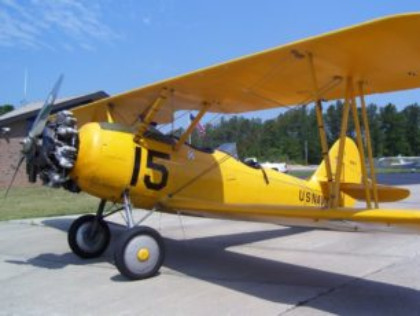 “The Naval Aircraft Factory N3N was an American tandem-seat, open cockpit, primary training biplane aircraft built by the Naval Aircraft Factory (NAF) in Philadelphia, Pennsylvania, during the 1930s.
“The Naval Aircraft Factory N3N was an American tandem-seat, open cockpit, primary training biplane aircraft built by the Naval Aircraft Factory (NAF) in Philadelphia, Pennsylvania, during the 1930s.
Built to replace the Consolidated NY-2 and NY-3, the N3N was successfully tested as both a conventional airplane and a seaplane. The seaplane used a single float under the fuselage and floats under the outer tips of the lower wing. The conventional airplane used a fixed landing gear. The prototype XN3N-1 was powered by a radial Wright designed Wright J-5 engine. An order for 179 production aircraft was received. Near the end of the first production run the engine was replaced with the Wright R-760-2 Whirlwind radial. The aircraft is constructed of metal using bolts and rivets rather than the more common welded steel tubing fuselages. Early production models used aluminum stringers formed for cancelled airship construction orders.
The N.A.F. delivered 997 N3N aircraft beginning in 1935. They included 180 N3N-1s and 816 N3N-3s. Four N3N-3s were delivered to the United States Coast Guard in 1941. Production ended in January 1942 but the type remained in use through the rest of World War II. The N3N was the last biplane in US military service – the last (used by the U.S. Naval Academy for aviation familiarization) were retired in 1961. The N3N was also unique in that it was an aircraft designed and manufactured by an aviation firm wholly owned and operated by the U.S. government (the Navy, in this case) as opposed to private industry. For this purpose, the U.S. Navy bought the rights and the tooling for the Wright R-760 series engine and produced their own engines. These Navy built engines were installed on Navy built airframes.
Postwar, many surviving aircraft were sold on the US civil aircraft market and bought for operation by agricultural aerial spraying firms and private pilot owners. A number are still (2014) active in the USA.”
Photo / Info Credit:
https://en.wikipedia.org/wiki/
Naval_Aircraft_Factory_N3N
F/A-18C Hornet
 “All-weather fighter and attack aircraft. The single-seat F/A-18 Hornet is the nation’s first strike-fighter. It was designed for traditional strike applications such as interdiction and close air support without compromising its fighter capabilities.
“All-weather fighter and attack aircraft. The single-seat F/A-18 Hornet is the nation’s first strike-fighter. It was designed for traditional strike applications such as interdiction and close air support without compromising its fighter capabilities.
With its excellent fighter and self-defense capabilities, the F/A-18 at the same time increases strike mission survivability in fleet air defense.
F/A-18 Hornets are currently operating in 37 tactical squadrons from air stations world-wide, and from 10 aircraft carriers. The U.S. Navy’s Blue Angels Flight Demonstration Squadron proudly flies them.
The Hornet comprises the aviation strike force for seven foreign customers including Canada, Australia, Finland, Kuwait, Malaysia, Spain and Switzerland.”
Source/Link:
https://www.navy.mil/navydata/fact_display.asp?cid=1100&tid=1200&ct=1
P-51 Mustang
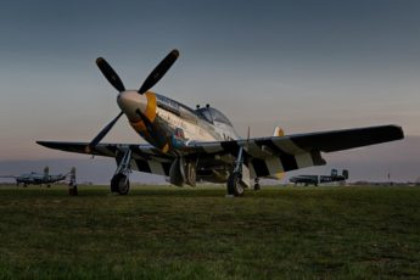 “The North American Aviation P-51 Mustang is an American long-range, single-seat fighter and fighter-bomber used during World War II, the Korean War and other conflicts. The Mustang was designed in 1940 by North American Aviation (NAA) in response to a requirement of the British Purchasing Commission for license-built Curtiss P-40 fighters. The prototype NA-73X airframe was rolled out on 9 September 1940, 102 days after the contract was signed and first flew on 26 October.
“The North American Aviation P-51 Mustang is an American long-range, single-seat fighter and fighter-bomber used during World War II, the Korean War and other conflicts. The Mustang was designed in 1940 by North American Aviation (NAA) in response to a requirement of the British Purchasing Commission for license-built Curtiss P-40 fighters. The prototype NA-73X airframe was rolled out on 9 September 1940, 102 days after the contract was signed and first flew on 26 October.
The Mustang was originally designed to use the Allison V-1710 engine, which, in its earlier variants, had limited high-altitude performance. It was first flown operationally by the Royal Air Force (RAF) as a tactical-reconnaissance aircraft and fighter-bomber (Mustang Mk I). The addition of the Rolls-Royce Merlin to the P-51B/C model transformed the Mustang’s performance at altitudes above 15,000 ft, matching or bettering that of the Luftwaffe’s fighters.
The definitive version, the P-51D, was powered by the Packard V-1650-7, a license-built version of the Rolls-Royce Merlin 66 two-stage two-speed supercharged engine, and was armed with six .50 caliber (12.7 mm) M2/AN Browning machine guns.
From late 1943, P-51Bs (supplemented by P-51Ds from mid-1944) were used by the USAAF’s Eighth Air Force to escort bombers in raids over Germany, while the RAF’s 2 TAF and the USAAF’s Ninth Air Force used the Merlin-powered Mustangs as fighter-bombers, roles in which the Mustang helped ensure Allied air superiority in 1944. The P-51 was also used by Allied air forces in the North African, Mediterranean and Italian theaters, and also served against the Japanese in the Pacific War. During World War II, Mustang pilots claimed 4,950 enemy aircraft shot down.
At the start of the Korean War, the Mustang was the main fighter of the United Nations until jet fighters such as the F-86 took over this role; the Mustang then became a specialized fighter-bomber. Despite the advent of jet fighters, the Mustang remained in service with some air forces until the early 1980s. After World War II and the Korean War, many Mustangs were converted for civilian use, especially air racing, and increasingly, preserved and flown as historic warbird aircraft at airshows.”
Photo / Info Credit:
https://en.wikipedia.org/wiki/
North_American_P-51_Mustang
Boeing Stearman PT-17
 “The Stearman (Boeing) Model 75 is a biplane used as a military trainer aircraft, of which at least 10,626 were built in the United States during the 1930s and 1940s. Stearman Aircraft became a subsidiary of Boeing in 1934. Widely known as the Stearman, Boeing Stearman or Kaydet, it served as a primary trainer for the United States Army Air Forces, the United States Navy (as the NS & N2S), and with the Royal Canadian Air Force as the Kaydet throughout World War II.
“The Stearman (Boeing) Model 75 is a biplane used as a military trainer aircraft, of which at least 10,626 were built in the United States during the 1930s and 1940s. Stearman Aircraft became a subsidiary of Boeing in 1934. Widely known as the Stearman, Boeing Stearman or Kaydet, it served as a primary trainer for the United States Army Air Forces, the United States Navy (as the NS & N2S), and with the Royal Canadian Air Force as the Kaydet throughout World War II.
After World War II, the thousands of primary trainer PT-17 Stearman planes were auctioned off to civilians and former pilots. Many were modified for cropdusting use, with a hopper for pesticide or fertilizer fitted in place of the front cockpit. Additional equipment included pumps, spray bars, and nozzles mounted below the lower wings. A popular approved modification to increase the maximum takeoff weight and climb performance involved fitting a larger Pratt & Whitney R-985 Wasp Junior engine and a constant-speed propeller. An iconic movie image is a Stearman cropduster chasing Cary Grant across a field in North by Northwest (the airplane that chased Grant was actually a Naval Aircraft Factory N3N Canary; the plane that hits the truck is a Stearman). Christopher Reeve and Scott Wilson are shown flying 1936 variants in the 1985 movie The Aviator.”
Photo / Info Credit:
https://en.wikipedia.org/wiki/
Boeing-Stearman_Model_75
UH-60 Blackhawk
 “The Sikorsky UH-60 Black Hawk is a four-bladed, twin-engine, medium-lift utility helicopter manufactured by Sikorsky Aircraft. Sikorsky submitted the S-70 design for the United States Army’s Utility Tactical Transport Aircraft System (UTTAS) competition in 1972. The Army designated the prototype as the YUH-60A and selected the Black Hawk as the winner of the program in 1976, after a fly-off competition with the Boeing Vertol YUH-61.
“The Sikorsky UH-60 Black Hawk is a four-bladed, twin-engine, medium-lift utility helicopter manufactured by Sikorsky Aircraft. Sikorsky submitted the S-70 design for the United States Army’s Utility Tactical Transport Aircraft System (UTTAS) competition in 1972. The Army designated the prototype as the YUH-60A and selected the Black Hawk as the winner of the program in 1976, after a fly-off competition with the Boeing Vertol YUH-61.
Named after the Native American war leader Black Hawk, the UH-60A entered service with the U.S. Army in 1979, to replace the Bell UH-1 Iroquois as the Army’s tactical transport helicopter. This was followed by the fielding of electronic warfare and special operations variants of the Black Hawk. Improved UH-60L and UH-60M utility variants have also been developed. Modified versions have also been developed for the U.S. Navy, Air Force, and Coast Guard. In addition to U.S. Army use, the UH-60 family has been exported to several nations. Black Hawks have served in combat during conflicts in Grenada, Panama, Iraq, Somalia, the Balkans, Afghanistan, and other areas in the Middle East.
After entering service, the helicopter was modified for new missions and roles, including mine laying and medical evacuation. An EH-60 variant was developed to conduct electronic warfare and special operations aviation developed the MH-60 variant to support its missions.”
Photo / Info Credit:
https://en.wikipedia.org/wiki/
Sikorsky_UH-60_Black_Hawk
Buy Now & Get Deeper Discounts (NOT Available to the Public)
on 2023 California Capital Airshow Tickets
DON’T MISS THE ACTION & FUN, PURCHASE YOUR TICKETS TODAY
* Nominal service fees apply & limited ticket quantities.
Our goal is to provide you with the best airshow experience possible at a range of price points. Ticket types include everything from an affordable day of aviation thrills for the whole family to a premium level air show experience. There’s something for everyone!
Please note:
Aircraft and performers are subject to change without notice, due to operational considerations. If anything changes, we will do our best to let you know. Thank you!
Your Privacy & Personal Information
The security of your personal online information is paramount to us! We attempt to go above and beyond to protect your online identity when using this web site or purchasing tickets to the Airshow. Any user information collected will be used for the purposes of giving you airshow updates, marketing the airshow, and selling tickets to the California Capital Airshow. Your information will NEVER be sold or rented to any third parties. For additional privacy information details, please review our privacy policy.


